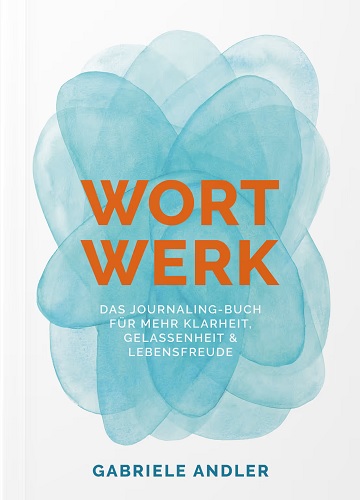Negative self-talk: risks and side effects
We all talk to ourselves. We often do this in a way that we wouldn’t put up with from anyone else and wouldn’t talk to anyone else. Negative self-talk is not only annoying, but in most cases also a hindrance.
Where does the inner voice come from that sometimes puts us down, demands top performance from us or always wants to please everyone? And why is negative self-talk not a good counsellor and how can we break the patterns behind it? That’s what this article is about.
What is negative self-talk?
Negative self-talk is nothing more than a constant stream of thoughts, comments, instructions and fantasies. It also includes dramas from the past or worst-case scenarios that we imagine for our future.
Sometimes self-talk is unmistakable, sometimes very subtle. Depending on the situation, it can sound anxious, shrill, angry, despondent, desperate or choleric. In most cases, it slows us down and weakens our self-esteem.
But self-talk doesn’t always have to be negative. With the right words, it can even motivate us. But instead of ‘It’ll work out!’ we often think sentences like:
- ‘It was obvious that it wouldn’t work out!’,
- ‘How stupid can you be?’ or
- ‘I’ll never manage that!’
From an evolutionary perspective, negative self-talk is an innate and vital function. However, it all too often gets out of hand in stressful situations. What goes on inside us mentally is highly complex and has been researched in psychology, neurology and other sciences for many years.
In terms of content, self-talk is primarily about ourselves. Even if we are thinking about something else, such as other people or a situation in current world events. It usually has to do with how this could affect us and our lives.
Most of this happens unconsciously. We don’t plan any of these thoughts or think them on purpose. Thoughts usually come completely unexpectedly and uncontrollably. You can try this out by observing your thoughts for a minute. See which thoughts you think on purpose or which ones just pop into your head. What will be the next thought and the one after that?
The fact that self-talk ‘just pops into our heads’ doesn’t make things any easier. What happens there?
Why thoughts are fabricated
The most important task of our brain is to keep our body alive. It starts by controlling all of our bodily functions, which means it has a lot to do.
At the same time, our brain processes what it perceives in the outside world in order to quickly recognise and avert potential dangers, among other things.
In order to recognise a danger as a danger, our brain needs comparative values with which it can compare the information. It obtains these comparative values from hereditary predispositions such as our instincts, but also – and this is where our past comes into play – from all our previous experiences.
Put simply, our brain scans our environment, compares the data it collects with our stored past experiences and then makes a ‘prediction’ of what is most likely to happen next. This all happens at lightning speed and without our conscious intervention.
When I first heard about it, the process reminded me of a previous project I was involved in as a computer scientist.
Basics for our mental imagery
The team I worked in had the task of developing an automated replenishment process for wholesalers and retailers. At the heart of automated procurement is a reliable forecast, the quality of which depends on many factors.
The situation is similar with the running of our internal programmes: We need appropriate hardware for computing power and data storage (brain), a good algorithm for processing (mind), a proper database for forecasting (experience) and enough time to carefully analyse all the information.
Two critical aspects of the replenishment calculation and self-talk are
- the time we allow ourselves for processing and
- the database we use for processing.
Let’s look at the time factor first.
Stimulus is followed by reaction
External stimuli are processed internally and a reaction is triggered depending on the situation and interpretation. This can happen very quickly.
As soon as we hear squealing tyres, we jump off the road faster than we can think. Nobody would question the need to react quickly.
However, if we slap someone over an offence in the heat of the moment, we might regret the speed afterwards – because of the many other options we didn’t consider.
If we give ourselves little time to interpret the stimulus, the first impression leads to an evaluation. We may draw hasty conclusions from this quick assessment and allow ourselves to be carried away into an impulsive reaction.
We achieve this speed through automatisms that take place internally. Every time we react to an external stimulus, we store this as a stimulus-reaction and the more often we do this with similar stimuli, the more deeply the stimulus-reaction process is anchored.
Using the example of an acute danger to our lives, the following happens: The sound of squealing car tyres (stimulus) triggers fear (danger) and makes us jump to the side (reaction). Our logical mind (prefrontal cortex) hardly plays a role in this process, as another area of the brain (limbic system) takes control when strong emotions are involved.
We don’t want to shake this automatism because it helps us to survive and there is no time to think about whether the sounds are really a danger.
The following example is similar: The angry look from our boss (stimulus) is quickly associated with a previous dismissal (experience). Fear (emotion) spreads and we sense danger (conclusion). We are paralysed, fall into a state of shock or become hyperactive (action). Here too, fear paralyses our logical mind, which we urgently need right now.
If we give free rein to the self-talk that follows, a series begins in our head that can keep us busy for nights on end.
What’s more, the content that we repeat in a continuous loop is memorised like an experience and is therefore used for future predictions. When memorising a story, our brain does not differentiate whether we are just imagining it or actually experiencing it.
Unconscious storytelling
The more often we replay these inner films, the quicker we have them ready as a ‘memory’ for the next event. The likelihood that we will behave in the same way again and again is therefore considerable.
However, this is not the only damage that negative self-talk can cause. It also changes our perception. We automatically pay attention to anything that could indicate that our assumption (‘The next redundancy is just around the corner.’) is coming true. We collect signs and falsely label them as evidence.
Only when we consciously pause can we observe and question these thoughts.
The more sensitive we become to our self-talk, the more clearly we will notice how negative the films are and how often we cement them internally through the many repetitions. Much of what goes on in our heads is not only exaggerated, but also highly improbable.
In the example of the ‘look from the boss’, I can think of many other options – with emotional distance – that could be used for an interpretation. Maybe she was stressed at home, maybe she was annoyed because of another incident or maybe she just slept badly.
Why don’t we collect more options instead of letting the first drama that comes along take up the entire playtime?
It becomes particularly critical when such automatisms intrude into sensitive areas of our lives and develop a life of their own. Let’s take a look at the database, which has a strong influence on the life of automatisms.
Prediction based on old data
The database that our brain uses to evaluate a stimulus includes everything we have ever experienced, heard, read or seen. The more emotional the experience was and the more frequently it took place, the faster our brain accesses it. Even when we can no longer consciously remember it.
Many formative experiences have their origins in our childhood, in which ‘survival’ was the top priority. We were dependent on others and developed strategies to be cared for and protected.
In order to achieve this, we strengthened behaviours that secured us the attention we needed and suppressed those behaviours that we thought would cause us to lose it.
As the brain of a small child is not yet able to think logically, the strategies were correspondingly simple. In psychology, this is also referred to as ‘magical thinking’. In my system analogy, this thinking could be attributed to inadequate hardware and software.
Magical thinking as the basis for decisions
Unfortunately, our brains also use early childhood strategies – which would no longer stand up to adult logic today – to evaluate current events. Automatisms are not so easy to switch off and here are a few examples that illustrate this.
- If we were criticised in childhood for every little mistake, we may unconsciously try to do everything perfectly in adulthood. The inner conviction that we developed as a child still has an effect today: that we are only OK if we don’t make any mistakes.
- Other strategies could be that we still do everything we can not to stand out, or that we try too hard, want to be particularly strong or try to please everyone.
If these strategies used to be the solution to finding our way in the world, feeling safe and belonging, today – especially in stressful situations – they are part of our problem.
That doesn’t mean that these inner drivers don’t have their good side – after all, they have brought us to where we are today. A brain surgeon is welcome to keep his perfectionist side at work. However, it can be helpful for them not to let these drivers take the reins in all life situations, as this could quickly degenerate into stress.
As these automatisms are rarely questioned, we remain stuck in this endless loop until we consciously confront them. Journaling is a powerful method for breaking through these endless patterns and bringing about lasting change.
Journaling as an exit strategy
Thoughts circle at lightning speed and jump from one thing to the next. This is why we can capture our self-talk particularly well with a written method, journaling.
In journaling, we give our mental imagery a space in which everything is allowed to be and in which we can question everything at the same time.
When writing, we slow down our thoughts and can pick out individual thoughts from the stream of thoughts, deepen them and understand them better. Journaling is a way of listening to yourself attentively – kindly, openly and without judgement. Even when you’re in the middle of an emotion and are recording it on paper. You can observe how the emotion often changes as you write.
This form of written reflection works best when we pursue good questions or follow the beginning of a sentence. We lure the unconscious parts and ways of thinking out of hiding during journaling and thus familiarise ourselves with them.
Journaling is ideal for daily routines, but is also helpful in moments when we are not feeling so well or when we are chewing on something that won’t let us go, but doesn’t serve us either.
The journaling method that I recommend here always starts with a pre-formulated sentence. This gives our thoughts a direction. It’s about finding out more about ourselves. How we feel at the moment, what we want, what makes us happy and what we would like to change.
The better we know about ourselves, the easier it is for us to react to them during the day and in the future. The more often we track down our mental imagery, the more likely we are to steer it in a positive direction in the long term.
Conclusion
Negative self-talk is not only annoying, but can also significantly weaken our self-esteem at crucial moments. Many of these inner monologues are based on old patterns, outdated assumptions and childish strategies that are often exaggerated and highly improbable.
In critical situations, negative self-talk increases our stress levels and blocks our logical thinking, while our perception is increasingly focussed on confirming these negative thoughts. With tools such as journaling, you can better recognise negative self-talk, understand the underlying drivers and regulate them effectively.
You always have the choice of how respectfully and favourably you treat yourself! It’s best to start now.
Notes:
If you are interested in the journaling method, it is worth taking a look at ‘WORD WORK – The Journal for more clarity, serentiy & joie de vivre’ In Gabriele Andler’s book, you will find detailed descriptions with 60 sentence starters, 30 mindfulness exercises and 120 quotes.
If you like the article or would like to discuss it, please feel free to share it in your network.
Gabriele Andler has published another article in the t2informatik Blog:

Gabriele Andler
Gabriele Andler works internationally as a coach, trainer and author. She has conducted numerous mindfulness-based programmes in companies worldwide and runs her own institute for yoga and mindfulness.
In her 24 years at SAP, she worked as a consulting manager and knows the challenges that companies and their employees face today. Her many years of experience with the practice of mindfulness have supported her both in self-management and in leading global teams.
Her books always revolve around three central questions: How can we remain calm, self-confident and in touch with ourselves and others even in difficult times? What helps us to react curiously and openly to change despite uncertainty? And how can we maintain our motivation and zest for life despite all the challenges?

